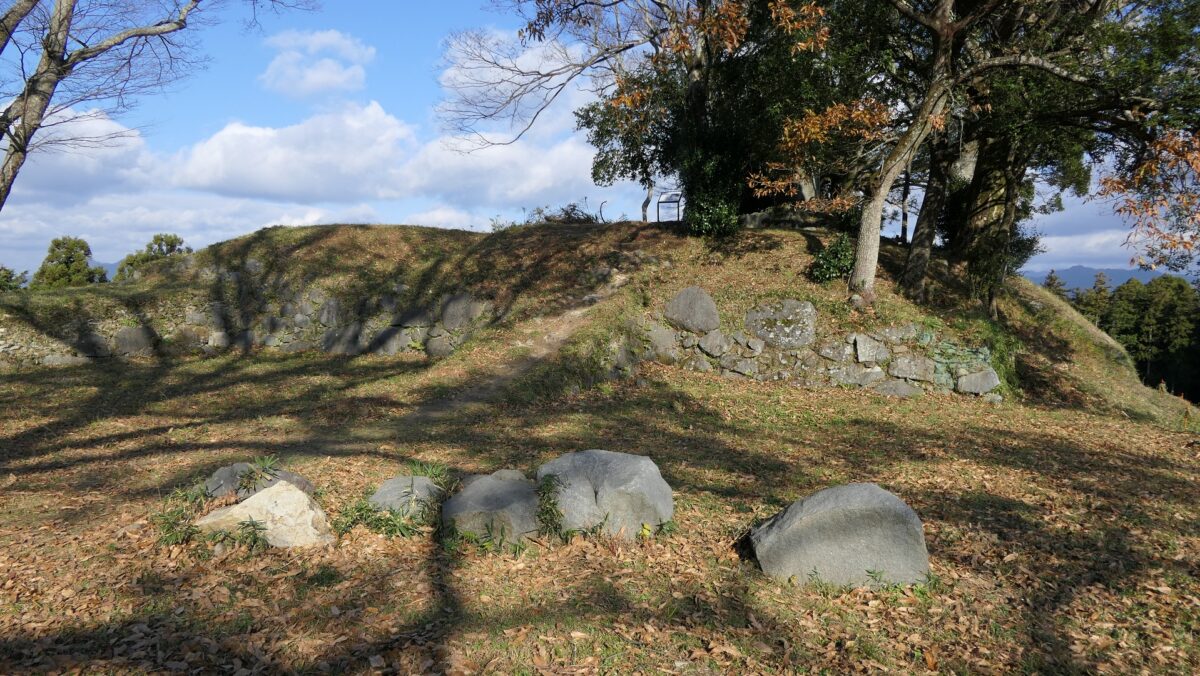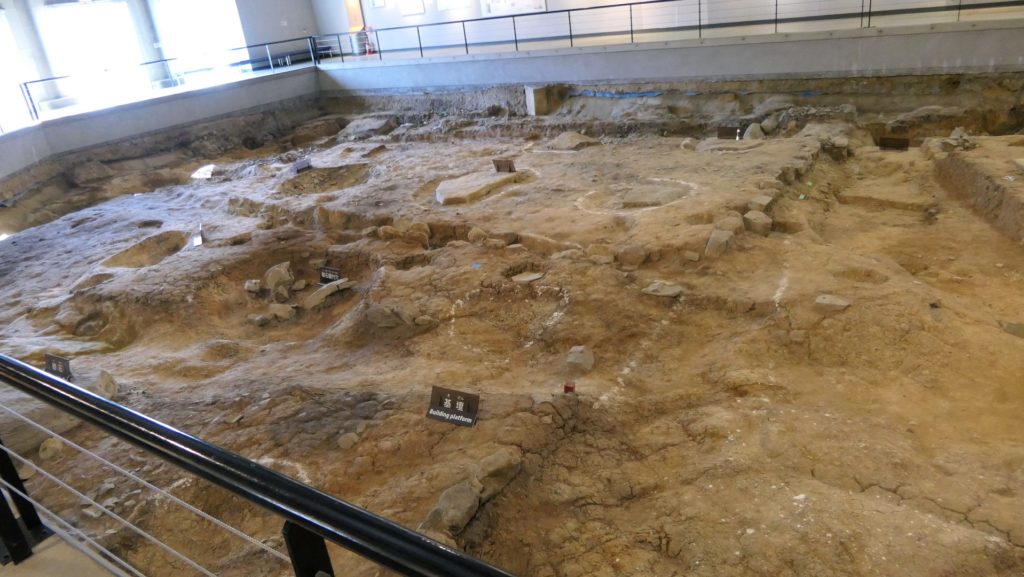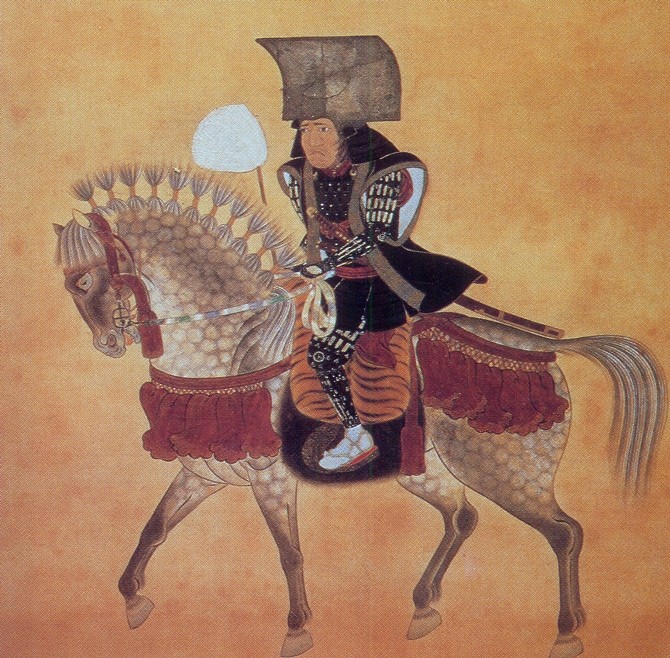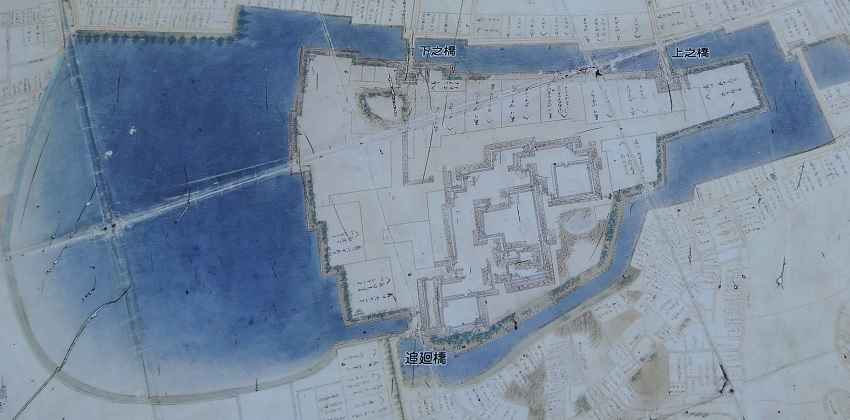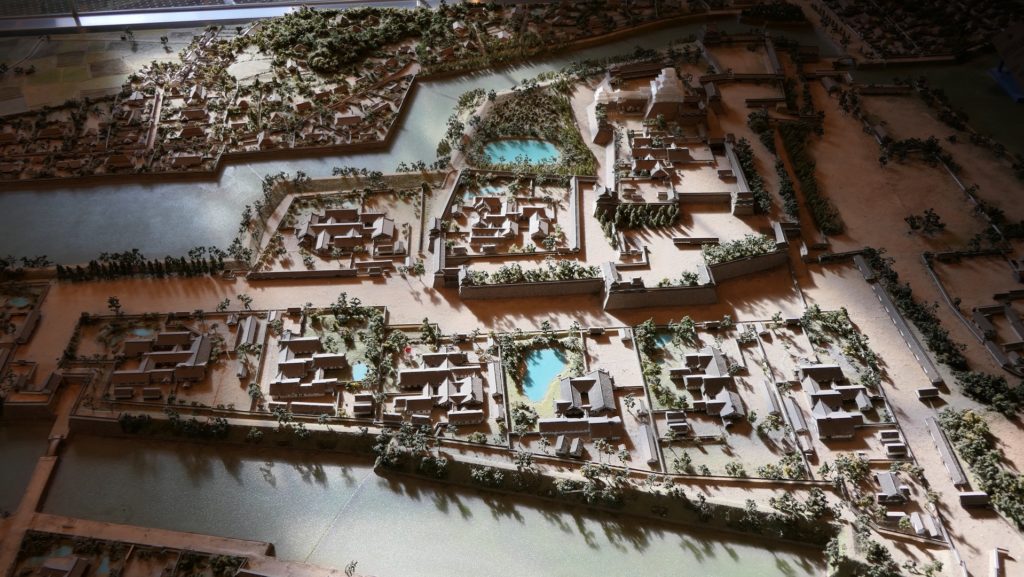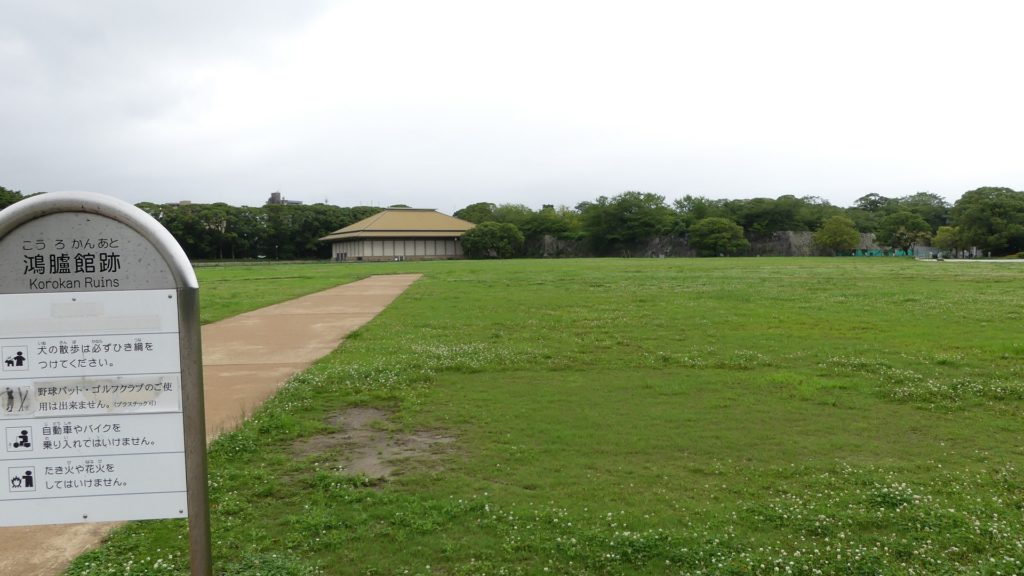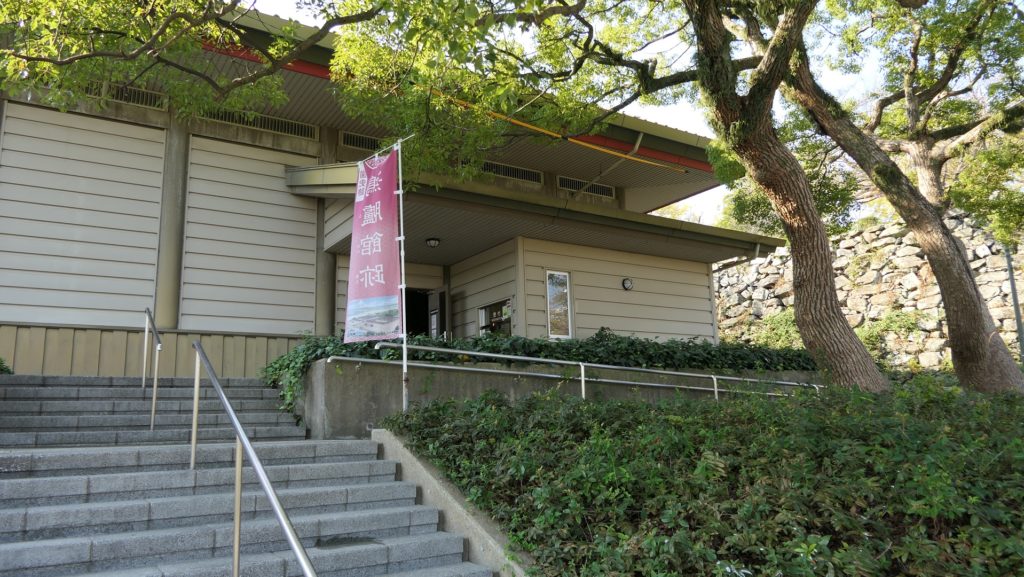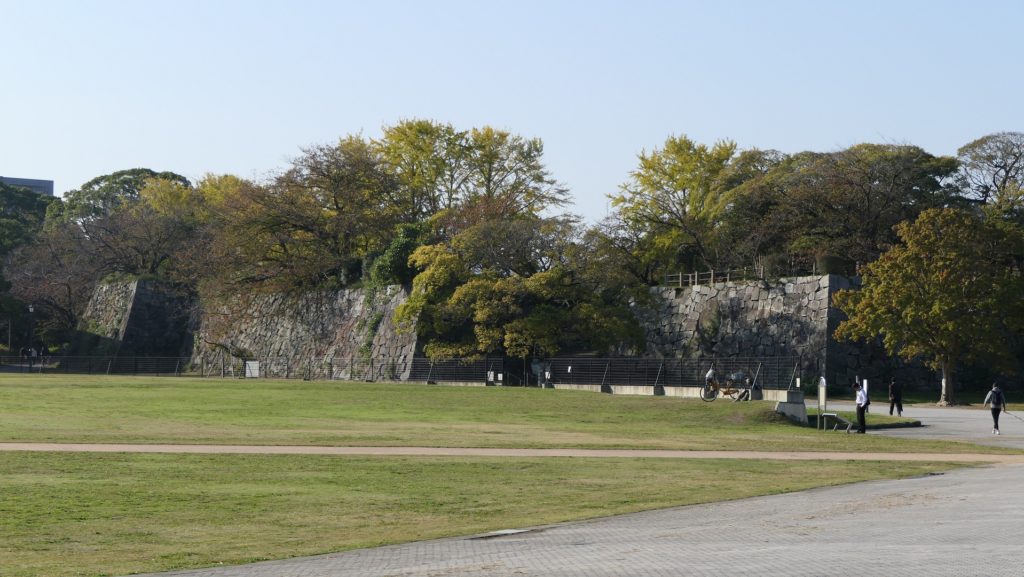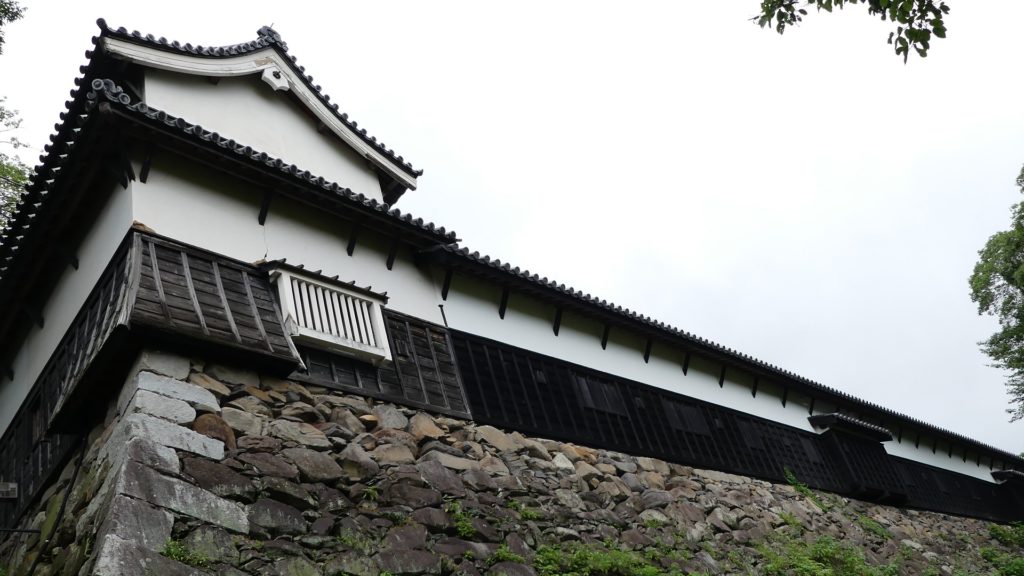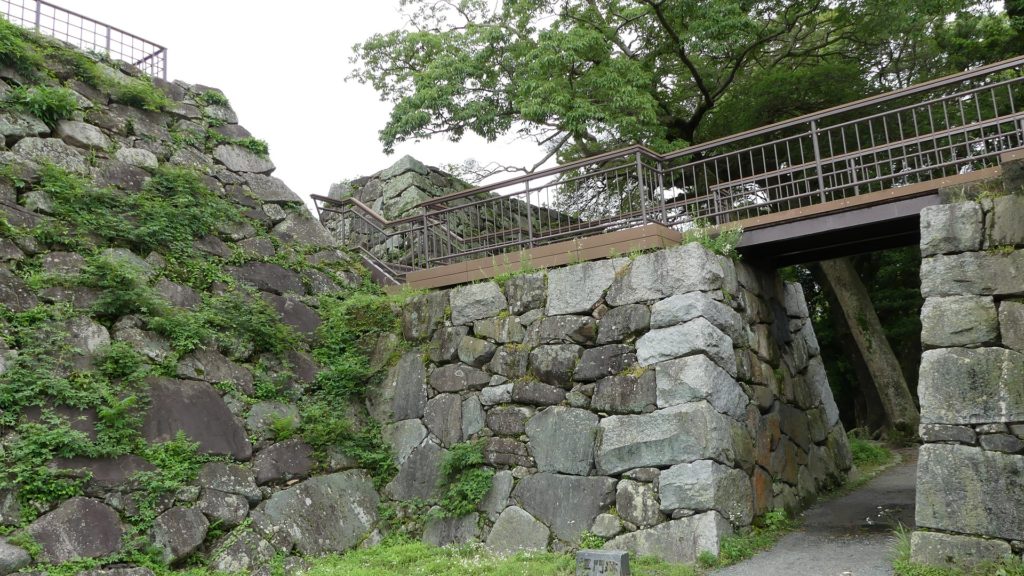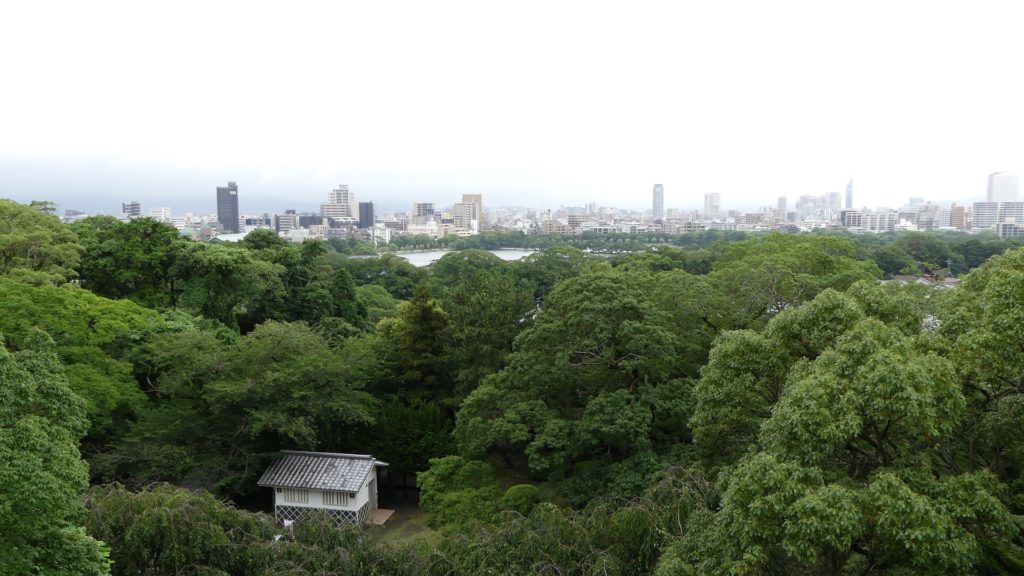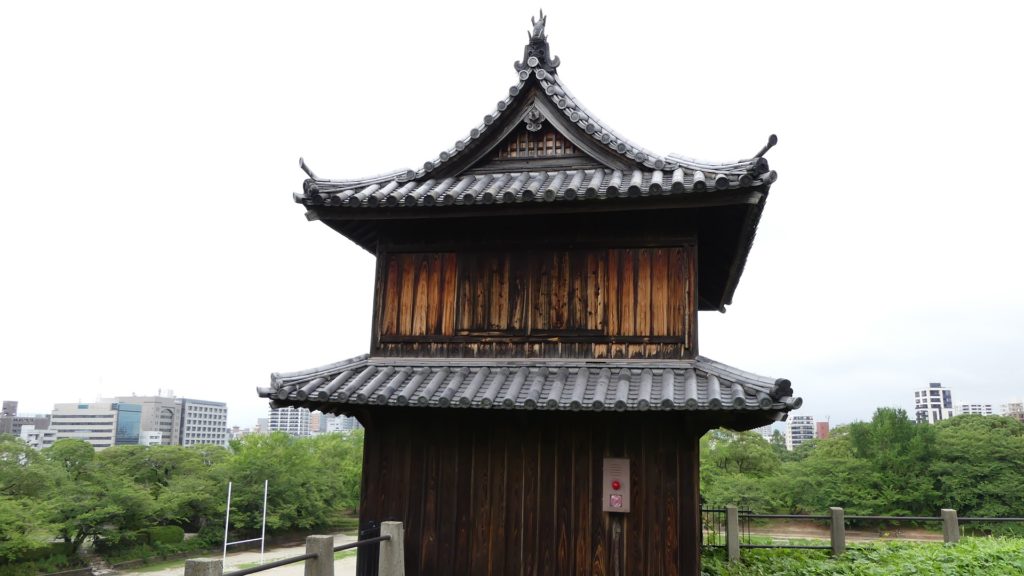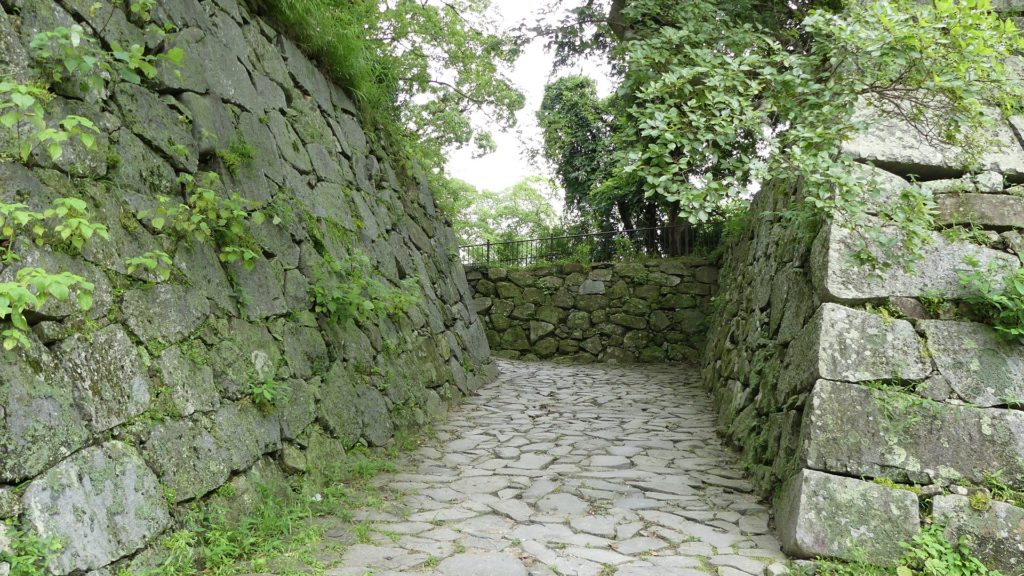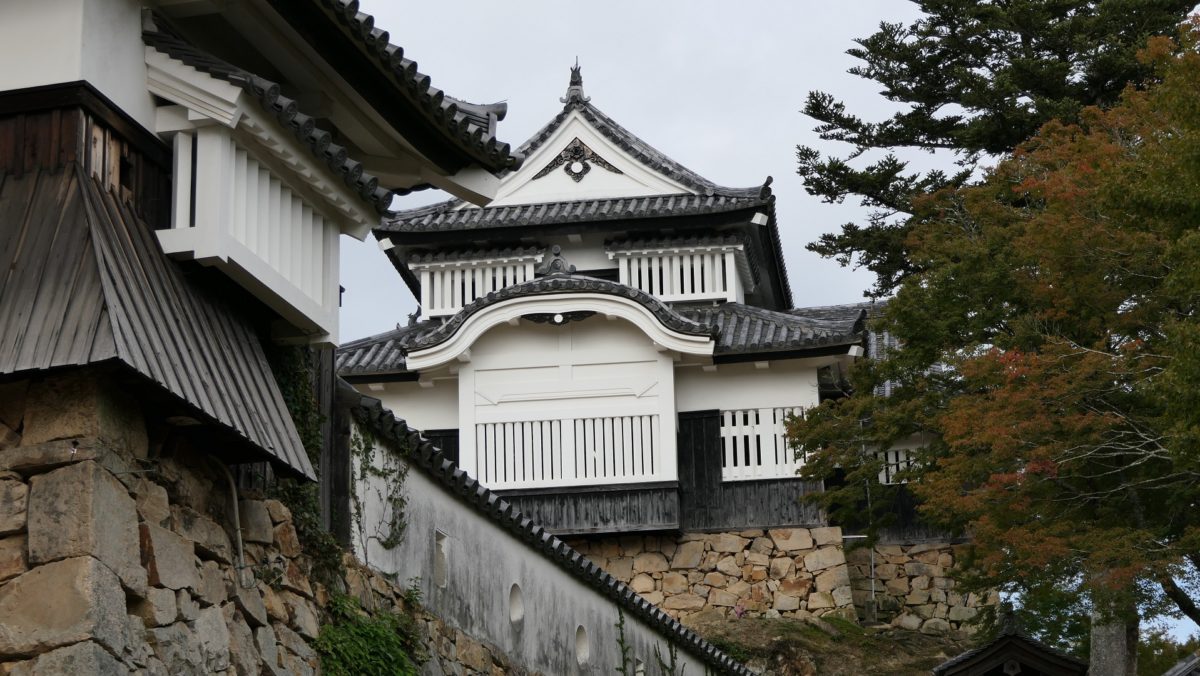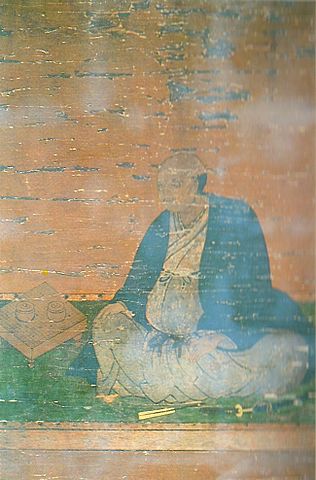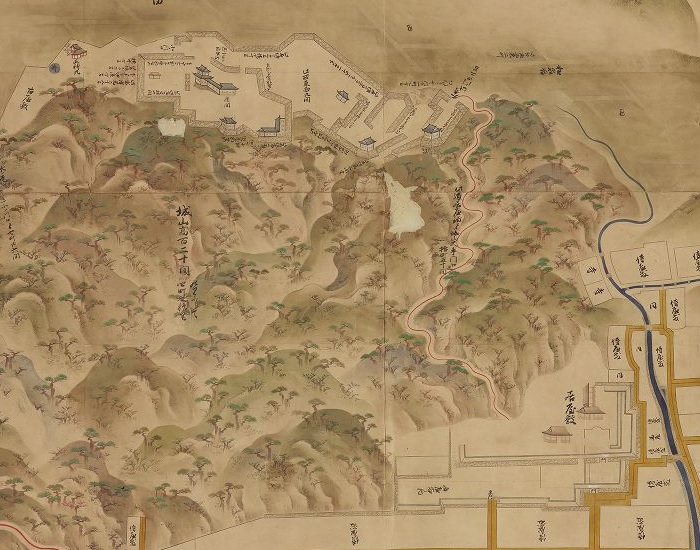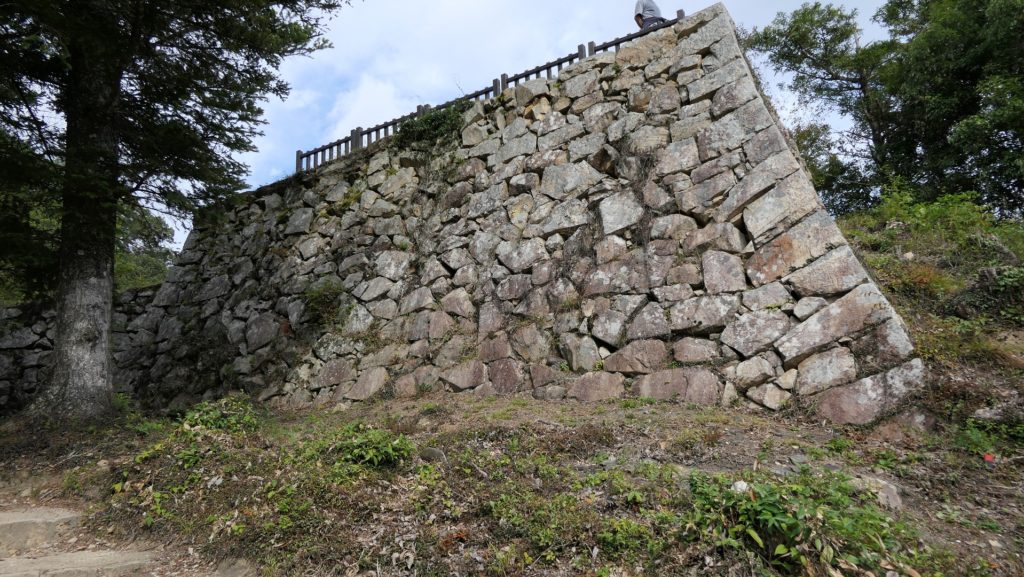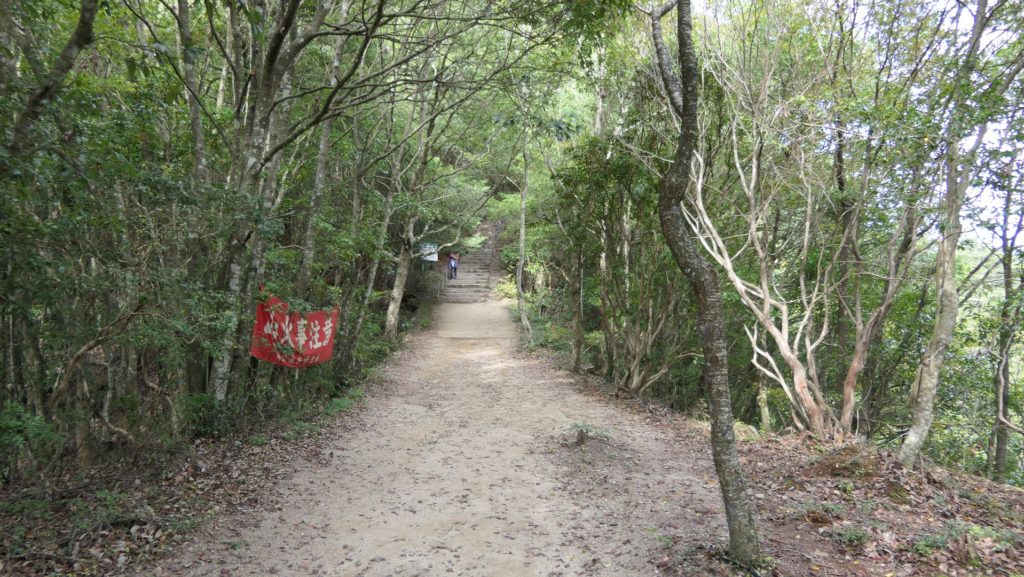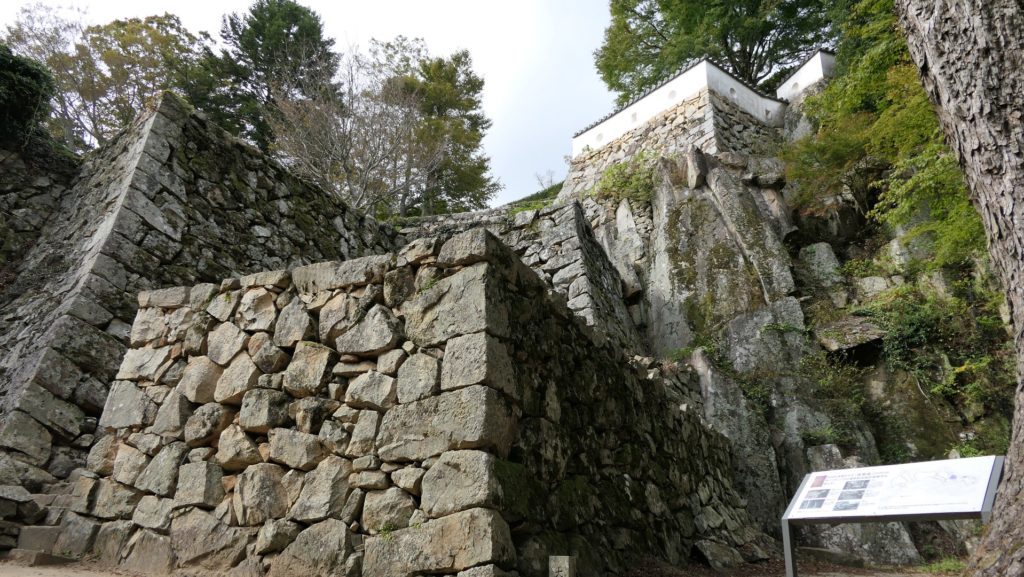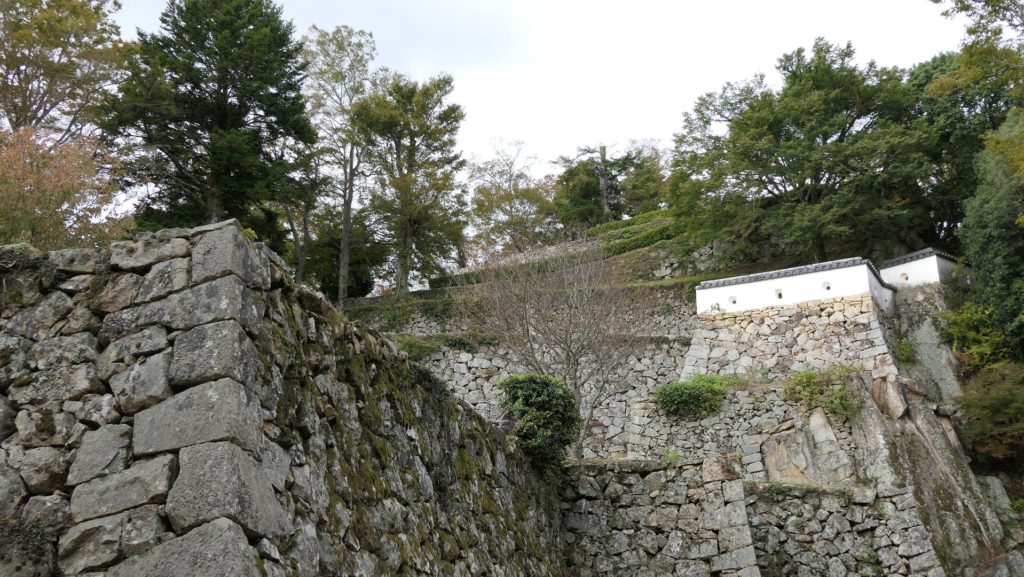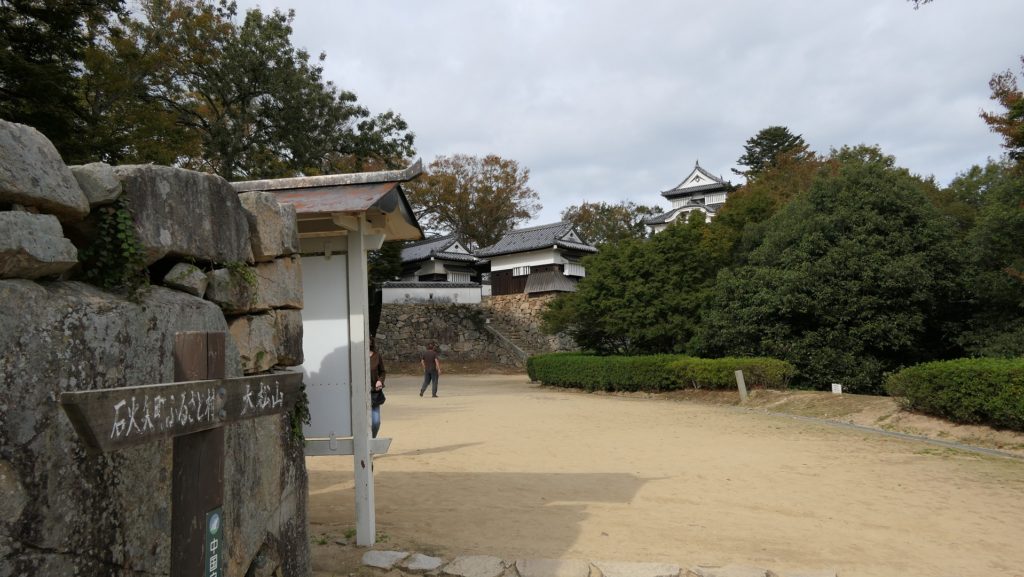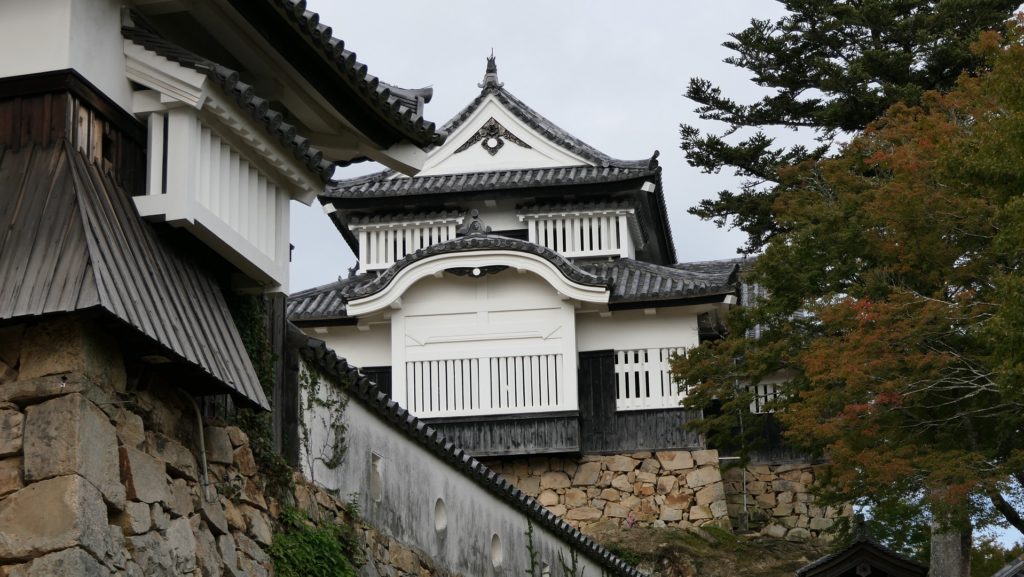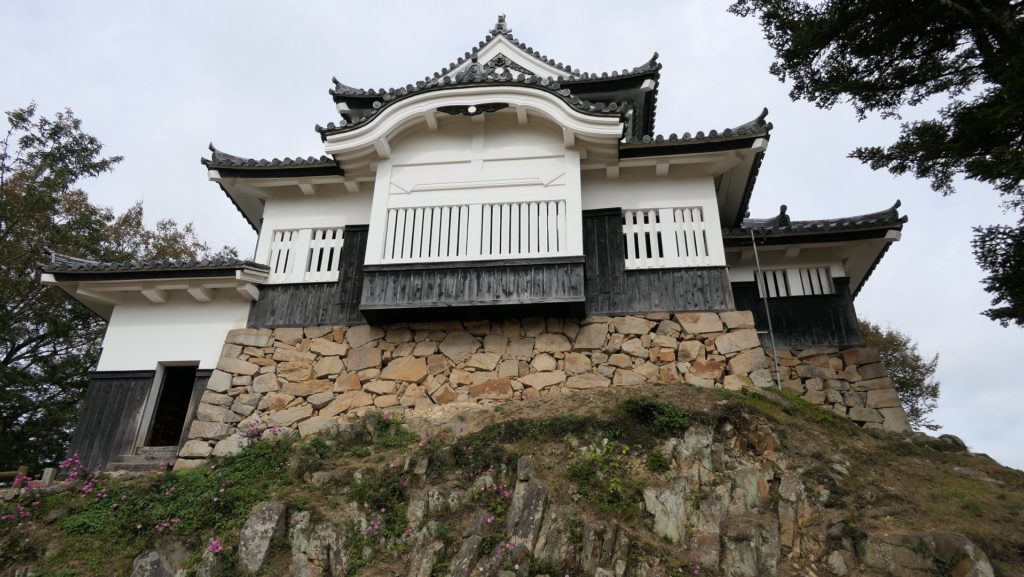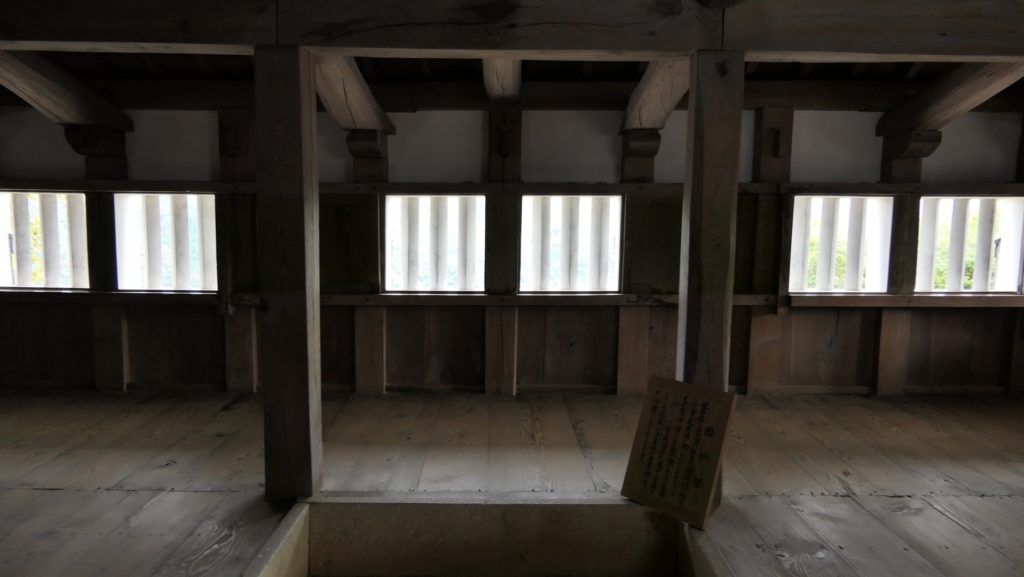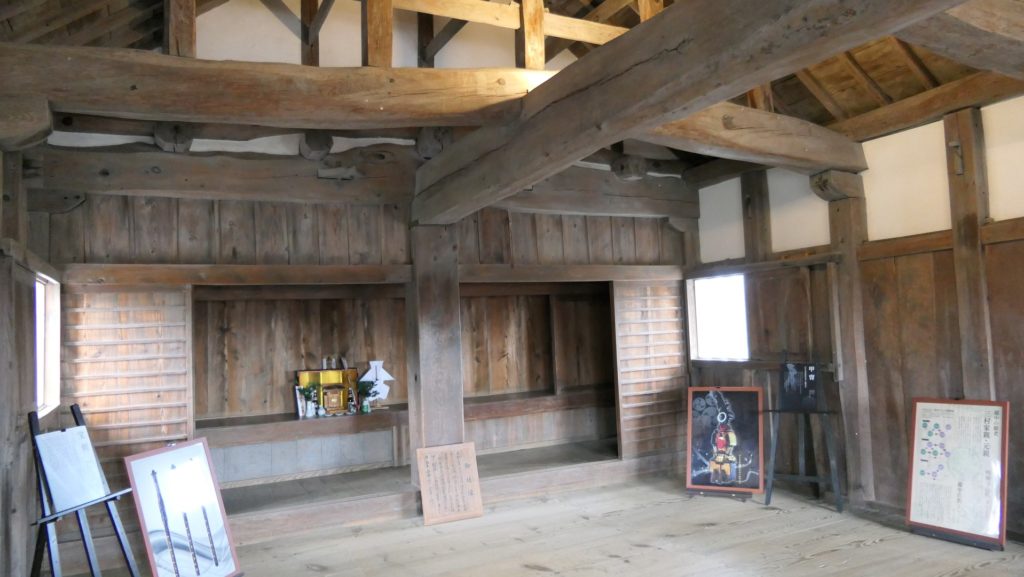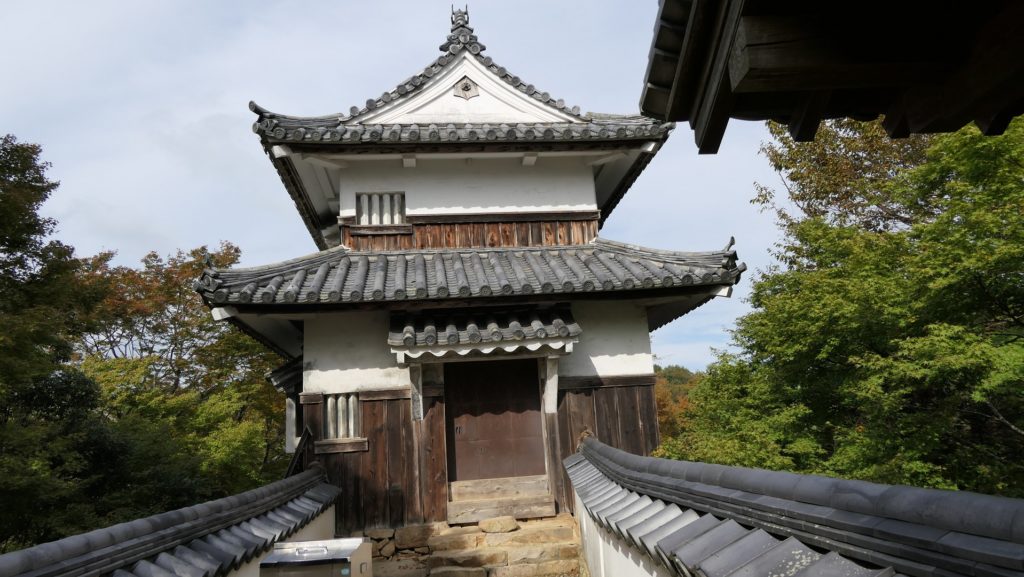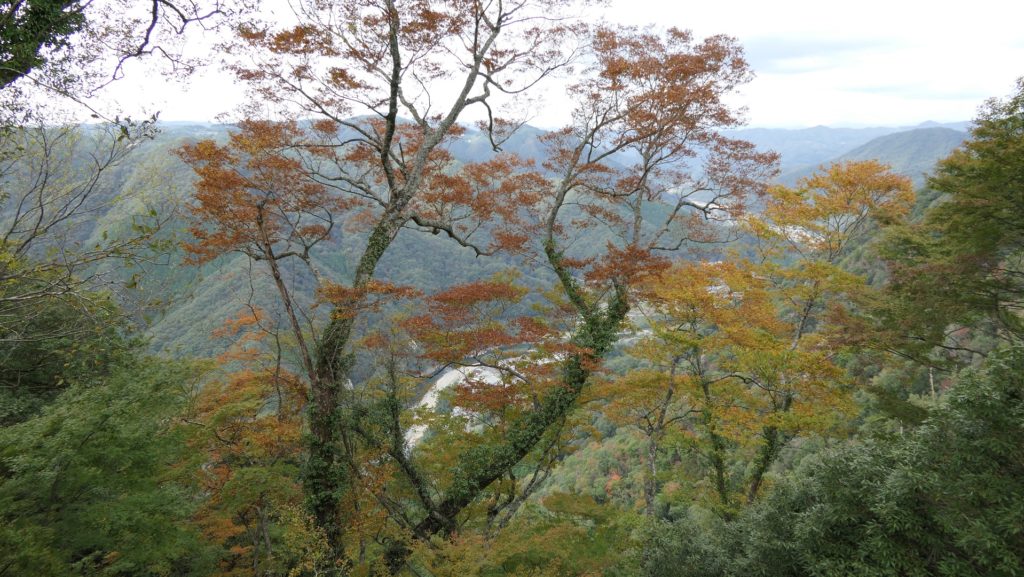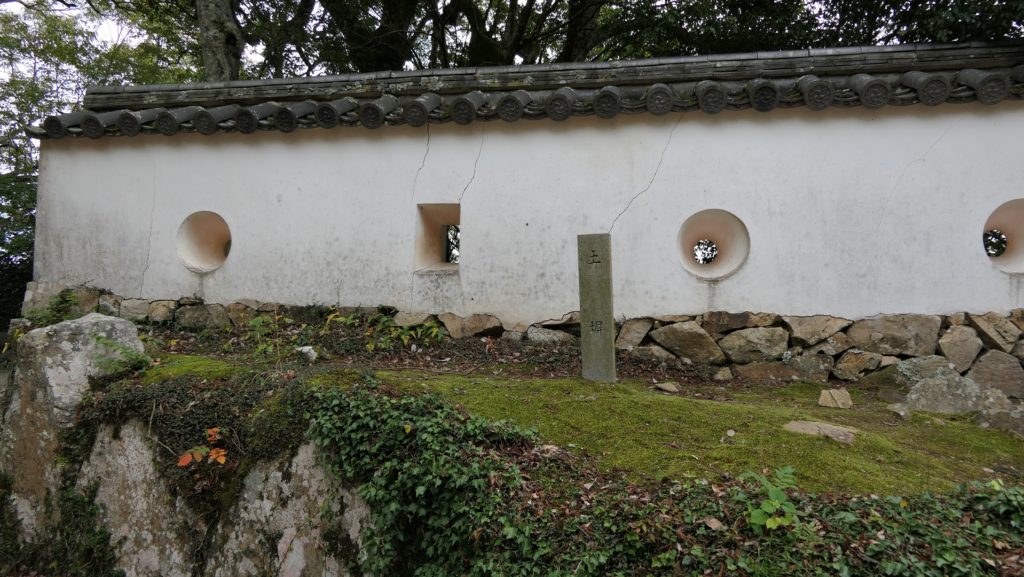立地と歴史~Location and History
大和三城の一つ~One of Three Greatest Castles in Yamato Province
宇陀松山城は奈良県の北西部、宇陀市にありました。宇陀市は、林業と古い町並みで知られています。大阪市から車で約1時間ほどの場所です。宇陀松山城は最初は「城山」という473mの高さの山の上に、秋山氏によって築かれました。
Uda-Matsuyama Castle was located in Uda City in the north east part of Nana Prefecture. Uda City is known for its forest industry and old town. The city is approximately one hour by car from Osaka City. The Uda-Matsuyama Castle was first built on a 473m high mountain called “Shiroyama” by the Akiyama Clan.
1585年、豊臣秀長が大和国(現在の奈良県)の統治を始めたとき、彼自身は大和郡山城を居城としていました。一方で、彼は家臣を、支城である高取城と宇陀松山城に派遣しました。その家臣のうち、主には多賀秀種が宇陀松山城を拡張しました。秀種は大和国の東部に領地を持っていて、東にある伊勢国との国境の防衛のため、城を用いていました。
In 1585, when Hidenaga Toyotomi started to govern Yamato Province (what is now Nana Prefecture), he lived in Yamato-Koriyama Castle, while he sent his retainers to Takatori and Uda Matsuyama Castles as his branch castles. Among the retainers was Hidetane Taga, who mainly developed the Uda Matsuyama Castle. Hidetane was granted the eastern part of the province with the intention to use the castle to prepare for the defense of the border between Yamato and Ise Province from the east.
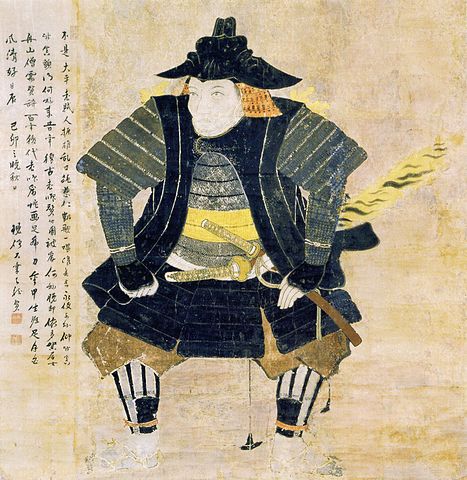
多賀秀種が城を改修~Hidetane Taga improves Castle
秀種は、この城を近世的なスタイルに変えました。城はいくつかの部分に分けられていました。御殿があった「本丸」と天守があった「天守郭」が山頂にありました。天守は、郭の大きさからすると2階か3階建てだったと考えられています。郭周辺の土壌から発掘により多賀氏の家紋が入った瓦が発見されています。
Hidetane changed the castle to an early modern style. The castle was divided into several sections: the Main Enclosure or “Honmaru” with the Main Hall, and Tenshu Enclosure with the Main Tower or “Tenshu” on the top of the mountain. The Main Tower is thought to be two or three stories based on the scale of the enclosure. The roof tiles with Taga Clan’s family crest were found by the excavation of the land around the enclosure.

「二の丸」や「帯郭」などの他の郭は、城の中心を取り囲んでいました。城の主要部の基礎部分は全て石垣造りで、多くの櫓が立ち並んでいました。城の出入り口である「虎口」は、櫓門や屈曲した通路によって厳重に守られていました。
Other enclosures such as the Second Enclosure or “Ninomaru” and the Belt Enclosure or “Obi-kuruwa” surrounded the center of the castle. The foundation of this main portion was all made of stone walls where a lot of turrets stood. The entrances to the castle called “Koguchi” were guarded strictly by turret gates and zigzagged routes.
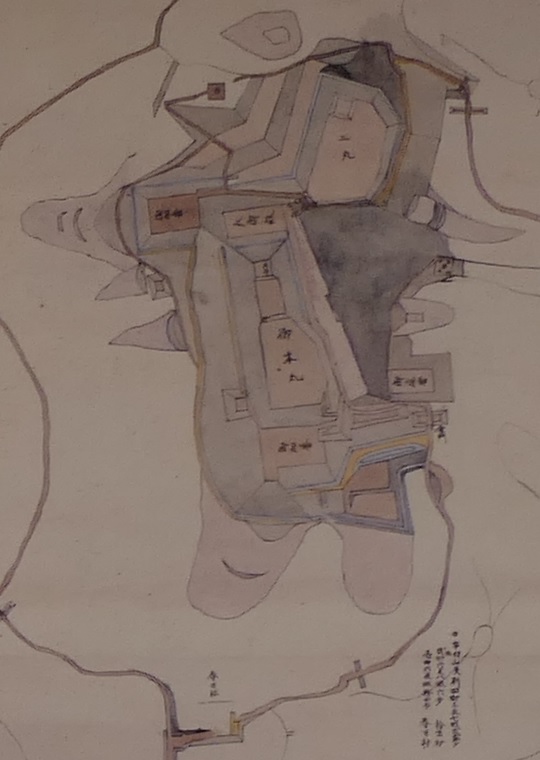
城は破壊された~Castle is Destroyed
1600年、広島城を治めていた有名な福島正則の弟、福島高晴が、多賀秀種の代わりとして、徳川幕府により宇陀松山城に送られてきました。彼は城を改修するとともに、城下町を整備しました。ところが、1615年に彼は幕府により、幕府に反抗していた豊臣氏を支援した疑いから改易となってしまいます。
In 1600, Takaharu Fukushima, the little brother of the famous lord, Masanori Fukusima who governed Hiroshima Castle, was sent to Uda Matsuyama Castle instead of Hidetane Taga by the Tokugawa Shogunate. He also improved the castle and the castle town, however, in 1615, he was fired by the Shogunate due to suspicions about his support of the Toyotomi Clan who was against the Shogunate.
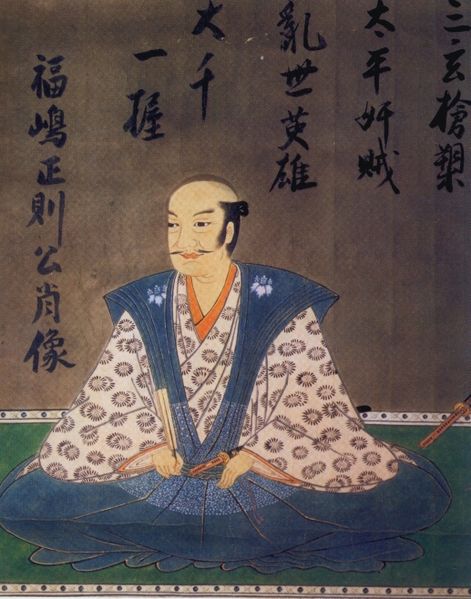
その結果、城は完全に破壊されることになり、建物と石垣は撤去され、通路は埋められました。執行者の一人、小堀政一の手紙が残っていて、作業は進んでいるものの、作業者が足りないということが書かれています。
As a result, the castle was completely destroyed removing the buildings and stone walls and burying the routes. A letter written by one of the executors, Masakazu Kobori, remains and says that he was destroying the castle, but lacked enough workers.
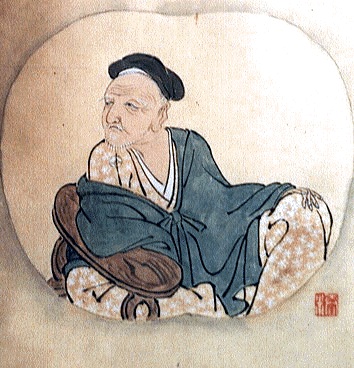
特徴~Features
杉林の中を進む~Going through Cedar Forest
以前観光客は宇陀松山城跡へは、市街地にある城の正門であった春日門跡から行くことができました。ところが、2018年の豪雨災害により「大手道」が閉鎖されており、通ることができません(2021年4月現在)。代わりに、まちづくりセンター「千軒舎」の脇道を通って行くことができます。もしかすると、城跡に向かっているのか疑問に思うかもしれません。美しく、よく手入れが行き届いた杉林が見えてくるからです。
Previously, visitors could visit the ruins of Uda-Matsuyama Castle from the Kasuga Gate Ruins in the town area which was the front gate of the castle. However, visitors can no longer do so because the Main Route or “Ote-michi” to the castle is closed (as of January 2021) due to a storm disaster in 2018. Instead, visitors can go through the side road beside the Town Planning Center called “Sengensha”. You may not be sure you are going to the ruins of a castle, as you will see a beautiful, well-maintained cedar forest.
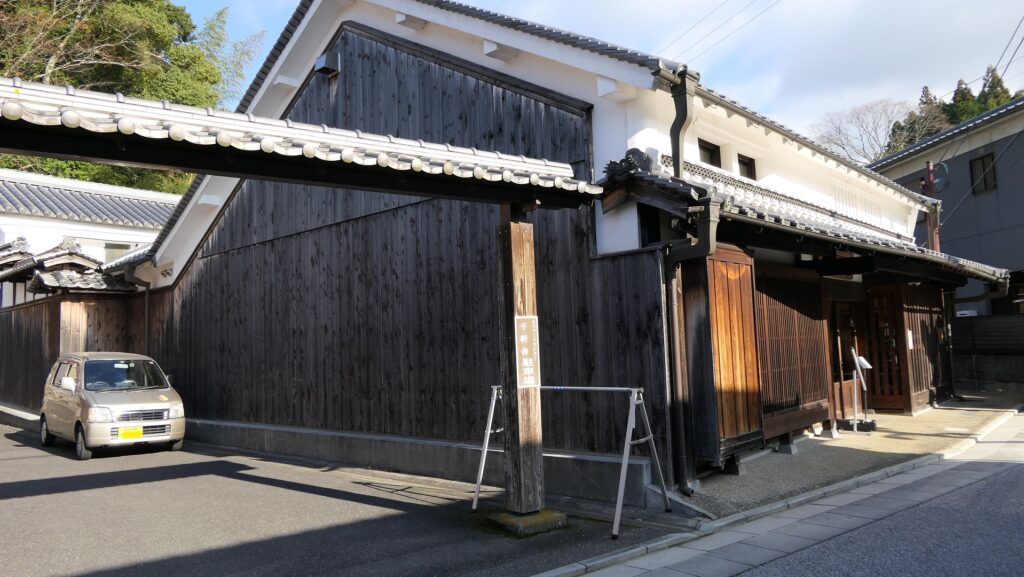
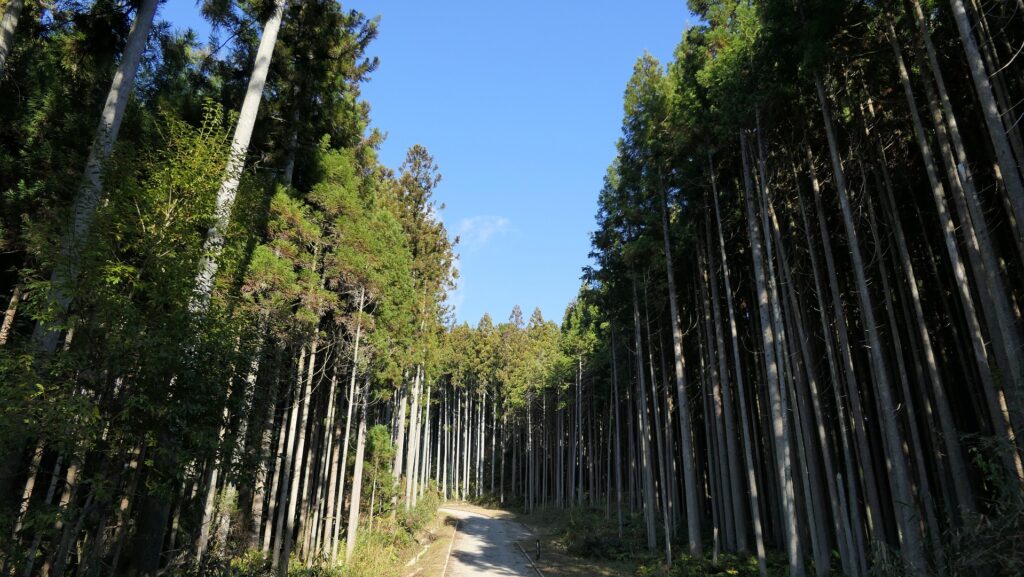
わずかに残る遺跡~Few remaining Ruins
約10分間登っていくと、城跡の入口に着きます。そこから山道をあと数分を登らねばなりませんが、そうするうちに空堀と櫓門跡が見えてきます。この門は「雀門」と呼ばれ、「桝形」という四角い空間がありました。桝形は、典型的な防御構造で、その四角い空間は櫓や石垣に囲まれていました。敵は、強力な防御の下を屈曲した通路をくぐり抜けねばなりません。
After about a 10-minute climb, you will reach the entrance of the ruins. You have to climb another trail for a few minutes, then you will see the ruins of a dry moat and one of the turret gates. This gate was called “Suzume-mon” which had a square space called “Masugata”. Masugata refers to a typical defensive structure where the square space is surrounded by turrets and stone walls. Enemies have to survive through a zigzagged route under the strong defense.
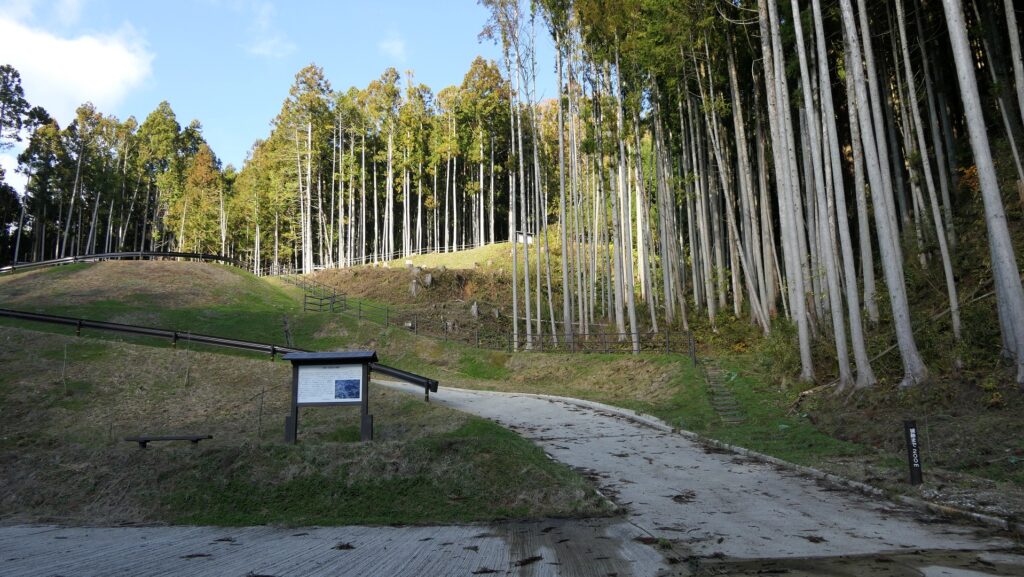



城の中心部分~Center of Castle
この城跡は、杉林によって隠されていて、少し変わった雰囲気があります。門を過ぎた後は、本丸に至るジグザグの道をまた進んでいきます。その道上にまた虎口郭門がありましたが、現在は何の痕跡もありません。本丸は、この城では最も広い郭です。ここには5つの棟を持つ御殿があり、また櫓や石垣に囲まれていました。
These ruins have a bit of a unique atmosphere, hidden from view by the cedar forest. After passing through the gate, you also have to go on another zigzagged route to reach the Main Enclosure. There was also the Entrance Enclosure Gate on the route, but there is no trace of it now. The Main Enclosure is the largest enclosure of the castle. It had the Main Hall with five houses and was also surrounded by turrets and stone walls.
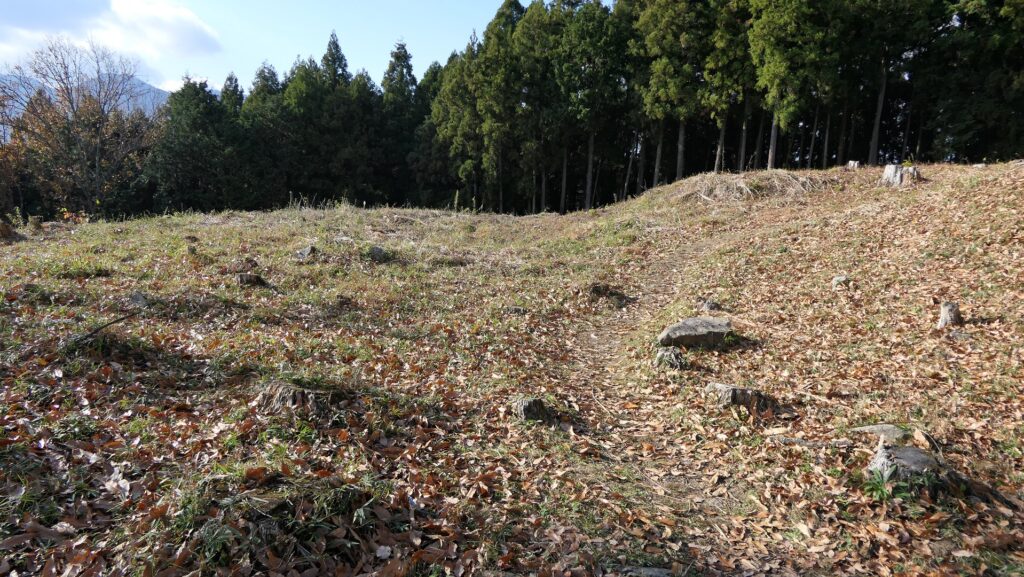
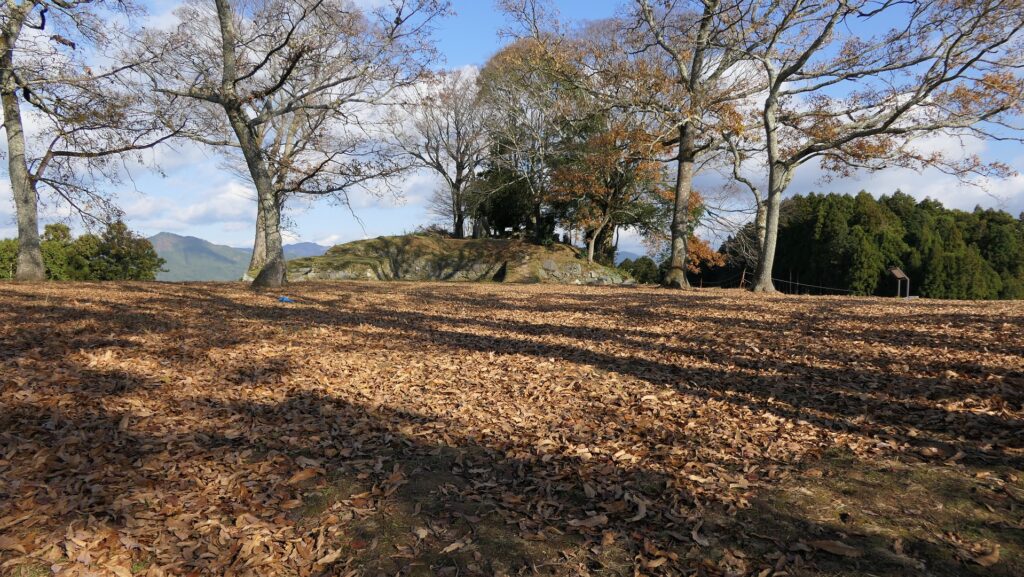
天守郭は、本丸の隣りにあります。ここは山の頂点であり、天守がかつて立っていた天守台石垣の一部分がまだ残っています。頂上からは、杉林に囲まれた他の郭や、遥か彼方の他の山々が見えます。
Tenshu Enclosure is next to the Main Enclosure. It is the highest spot of the mountain and parts of the base of the stone walls still remains where the Main Tower once was. You can now see other enclosures surrounded by the cedar forest and other mountains far away from the top.

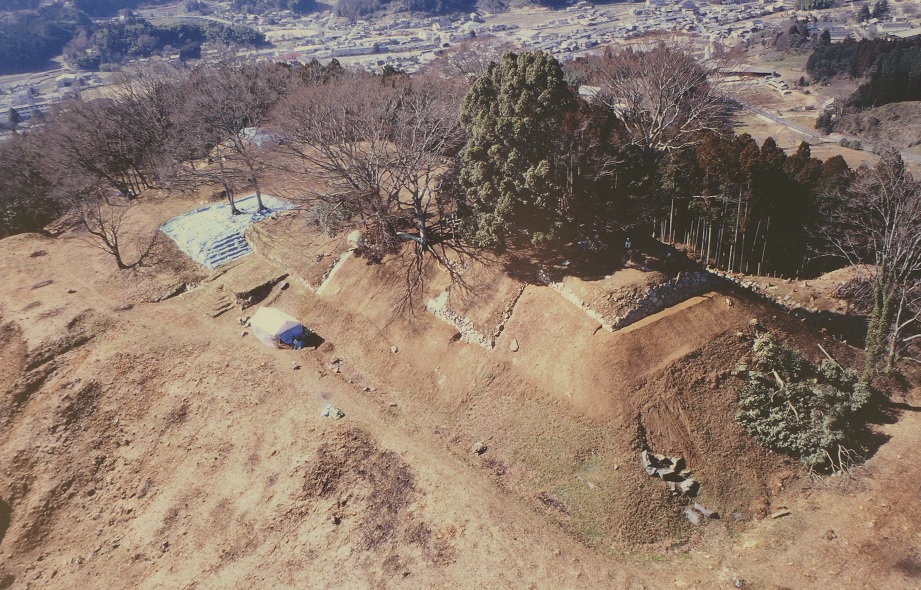
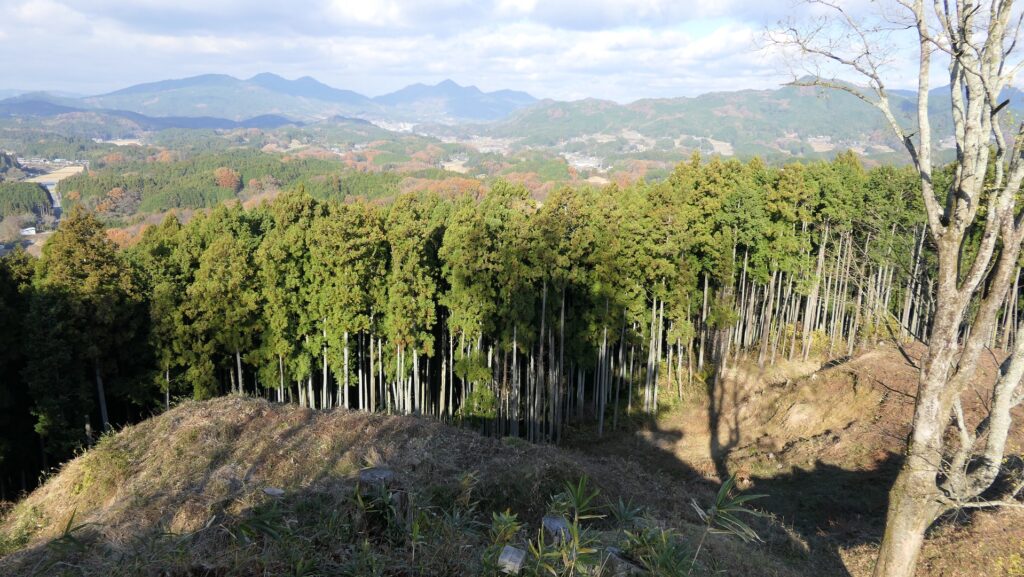
その後~Later History
宇陀松山城が破壊された後、織田氏がこの地域を治めましたが、城下町の辺りの館に住んでいました。また、春日門跡を修繕して館の門として使用しました。幕府は最終的には織田氏を他の所に移し、直接この地域を統治します。城下町は、商業の町として繁栄を続けました。
After the Uda-Matsuyama Castle was destroyed, the Oda Clan governed this area, but the clan lived in the hall around the castle town. They also repaired and used the Kasuga Gate Ruins as their hall’s gate. The Shogunate lastly governed the area after it transferred the Oda Clan to another place. The castle town continued to prosper as a commercial town.

1995年、宇陀市は城跡の発掘と研究を始めました。その結果、城には山の上に石垣を使った豪華な建物があったことがわかったのです。発掘の成果により、城跡は2006年に国の史跡に指定されました。
Uda City started to excavate and study the ruins of the castle in 1995. It found out that the castle was built using stone walls and had luxurious buildings on the mountain. The ruins were designated as a National Historic Site in 2006 due to the achievement of the excavation.
私の感想~My Impression
発掘や研究の方法は年々進化しています。現在建物がなくても城の建物がどのようなものであったか推測できるのです。今回の訪問と宇陀松山城についての研究により、私は過去にこのような立派な城があったことに本当に驚きました。
The methods of excavation and study have been improving. They have made it possible to speculate what buildings in a castle looked like even if there are no buildings now. From my visit and research about the Uda-Matsuyma Castle, I was actually surprised to learn that there was such a great castle in the past
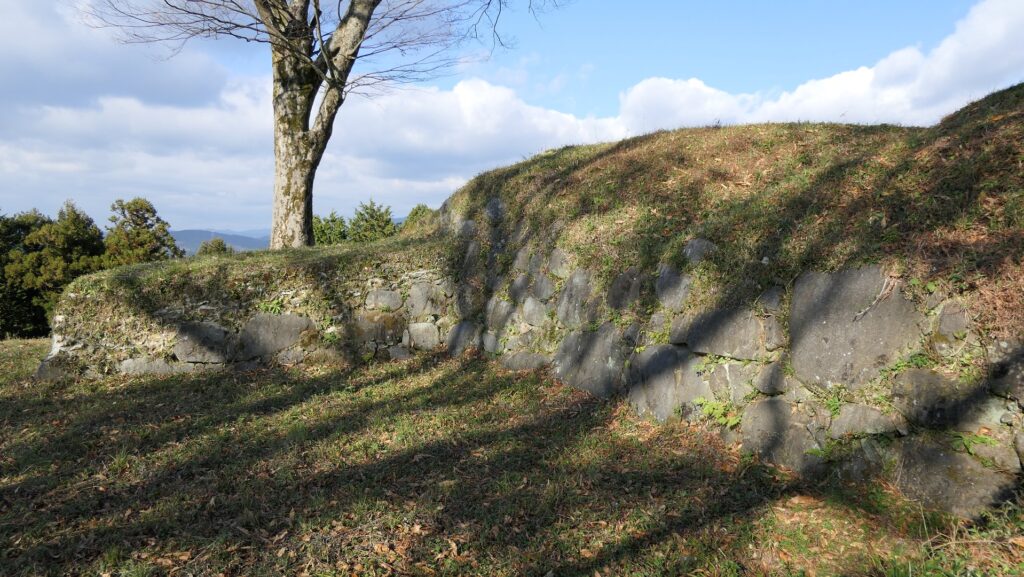
更には、ある城が残るかどうかは、ほんの小さなことで違ってきてしまうことも知りました。宇陀松山城の場合、高晴がもう少し長く持ちこたえていれば、城跡は高取城のように少なくとも石垣くらいはまともに残っていたと思うのです。
In addition, I also learned that whether something of a castle can remain or not is sometimes based on very small things. In the case of the Uda-Matsuyama Castle, if Takaharu survived a little longer, the ruins of the castle would include at least with decent stone walls like Takatori Castle.
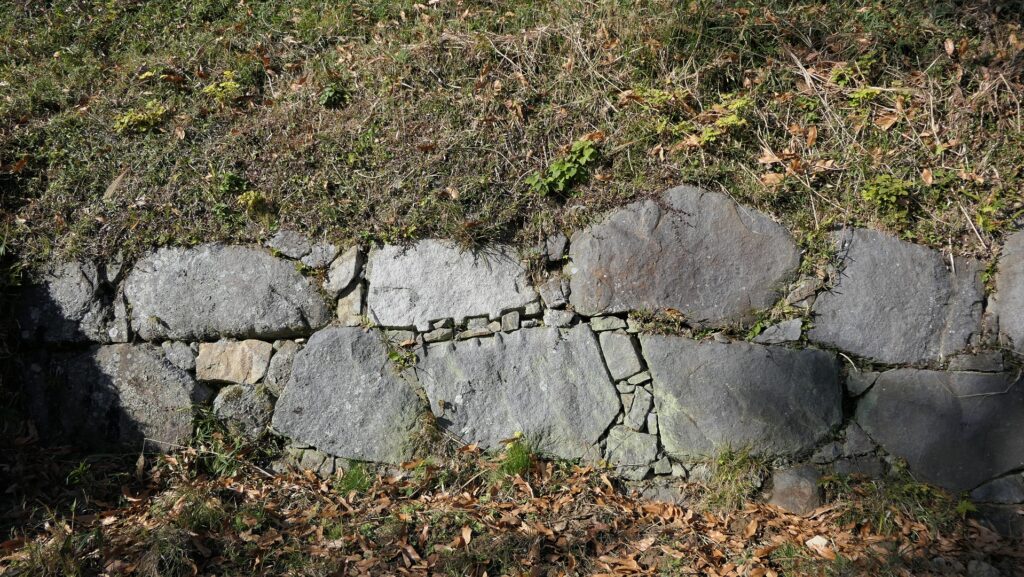
ここに行くには~How to get There
車で行かれる場合は、南阪奈道路の葛城ICから約40分かかります。まちづくりセンターに駐車場があります。
電車の場合は、近鉄大阪線の榛原駅から大宇陀行きのバスに乗って、終点で降りてください。
If you wish to visit there by car, it takes about 40 minutes from the Katsuragi IC on Minami-Hanna Road. There is a parking lot at the Town Planning Center.
When using the train, take the bus for Ouda from Haibara Station on Kintetsu Osaka Line, and get off at the last stop.
リンク、参考情報~Links and References
・宇陀松山城跡、宇陀市(Uda City Official Website)
・鬼面百相、史跡宇陀松山城出土資料展パンフレット(Japanese Pamphlet)
・「日本の城改訂版第120号」デアゴスティーニジャパン(Japanese Book)

